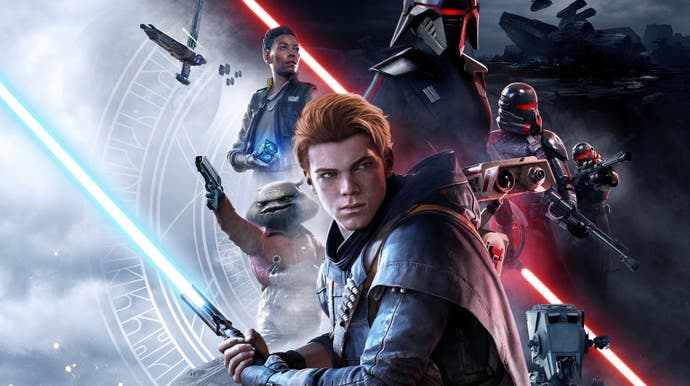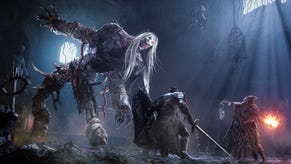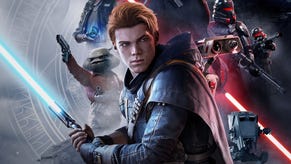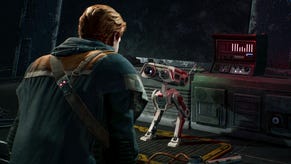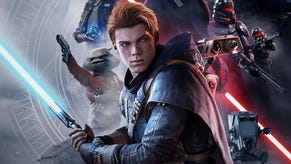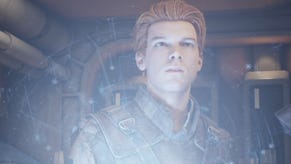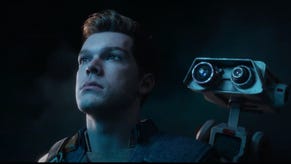Star Wars Jedi: Fallen Order review - solid combat mired in shallow storytelling and technical problems
Mediochlorians.
The annoying thing is, for the first ten hours or so, I absolutely adored Star Wars Jedi: Fallen Order. What a wonderful feeling to finally plunge into a Star Wars game with carefully-crafted alien worlds, references to delight die-hard fans, and new lore to expand that galaxy far, far away. Since EA acquired the licence for Star Wars games in 2013, fans have been desperate for a really good story - and an enormous amount of hope has been riding on this game.
On paper, Star Wars Jedi: Fallen Order seems to fit the bill. It's a single-player title combining Soulsborne combat, Uncharted climbing and Metroidvania level design to create something that's uniquely its own. As a true melting pot of many of the best features of modern and retro gaming alike, I initially thought Respawn might be onto a winner. Yet despite a glowing start, the game has problems sustaining its momentum in terms of both game design and narrative - eventually sagging into a tedious grind with a lacklustre finish. And, on top of that, there's a raft of performance issues on Xbox One. If only it could have kept that charm going.
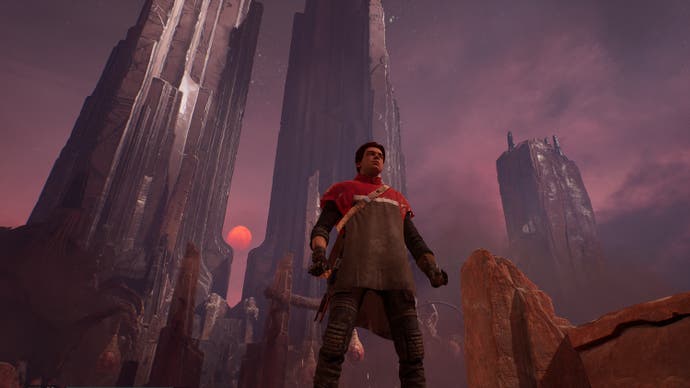
Fallen Order takes place five years after the events of Revenge of the Sith and the infamous Order 66. The Jedi Order has been destroyed, as have nearly all the Jedi - but at least one remains in the form of protagonist Cal Kestis, a former Padawan who's in hiding as a scrapper on the planet of Bracca. Due to events outside his control, Cal is forced to reveal his powers, and only escapes the Empire's inquisitors with the help of two mysterious individuals, a woman called Cere and a reluctant green alien named Greez, who whisk him away to rebuild the Jedi Order. It's a fair premise for a story, and the game's opening action sequences through the industrial metal constructs of Bracca are pure heart-pounding thrills.
Once you're out the opening stages, you're led to the main thrust of the game: venturing between various planets to complete the main story objectives and new skills, alongside finding additional pick-ups and cosmetics to decorate Cal, your ship, your droid BD-1 and your lightsaber. It's a neat system that gives players a fair amount of freedom, while keeping the levels tight enough for choreographed action sequences. I'm pleased to report the outdoor areas in one of the earliest planets, Zeffo, are still as brilliant as when I played them earlier this year, and show Fallen Order at its best. Well-paced combat, beautiful vistas, epic music and fantastic environmental design make it a joy to play, successfully striking that balance of exploration and challenging gameplay. The routes are winding but navigable, and at this point the environmental puzzles revolve around mobility and timing your use of force powers, such as freezing an object to climb on it.
I spent a great deal of time scanning and reading data entries to learn more about Zeffo, piecing together a picture of what the empire did there. Fallen Order's environmental storytelling is intricate and detail-oriented, focused on something previously given little airtime in Star Wars: the impact of the empire's war machine, and how it touches even small communities on every planet in the galaxy. To balance things out, I also found myself chuckling at small details such as enemy placement: two rat-like creatures can immediately be found pulling on a dead stormtrooper's legs (dark humour, I know), while another leaps on a stormtrooper to push him over the edge.
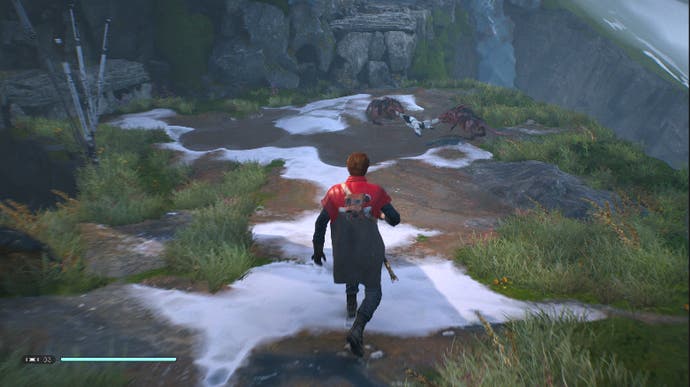
In fact, I could probably write an entire article about the stormtroopers alone. Respawn's done an incredible job of bringing these enemies to life, to a point where I felt genuinely bad for killing some of them - perhaps inadvertently creating one of the better moral questions in Fallen Order. At this point in Star Wars lore, troopers are conscripts, not clones, and you can hear the variety of attitudes towards their work when sneaking around ahead of a fight. Some exhibit a kind of fascist bro attitude towards their jobs (and purge troopers display a zealous desire to fulfill their purpose by killing Jedi), but many are just in the middle of regular conversations: expressing how they don't want to end up on garbage duty, how they didn't sleep the night before - another complaining to an officer that their potential is being wasted on a barren planet. Mid-fight, some of them will sarcastically remark about being the last one standing, or voice hesitation at taking on a Jedi. The mundanity of the conversations and honesty of their reactions makes them both comical and relatable - and there's at least one high ground joke to satisfy r/PrequelMemes.
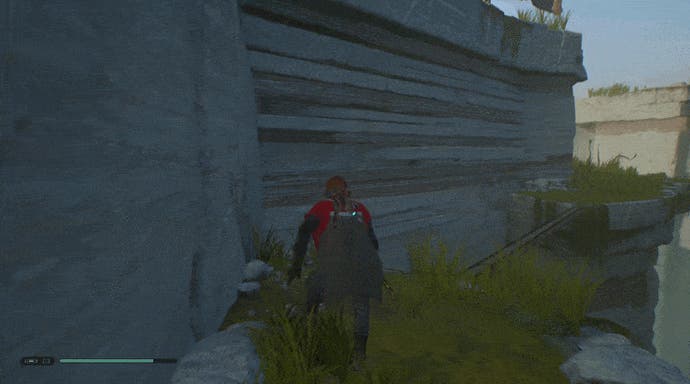
Sorry, back to Zeffo: the furrowed landscapes also provide an excellent stage for Fallen Order's combat, giving players room to breathe between encounters, and largely leaving a fair but challenging amount of time between meditation spots (effectively save points). If that sounds familiar, it's because it is: Fallen Order uses a combat system that leans heavily on From Software games, with an emphasis on timed parries, dodges, and using tactics tailored to each of the diverse set of enemies, whose patterns of attack (including unblockable attacks) you'll have to memorise. Resting at meditation points allows you to heal and reset your health stims - but doing this also respawns enemies, so you'll have to consider whether it's worth risking the hop to the next one. If that ends badly, you'll drop whatever XP you've racked up from killing enemies on the enemy that defeated you. In turn, damaging this golden glowing enemy then restores your life, a nice little boost in a tough fight.
That XP eventually turns into skill points, which can be spent in Fallen Order's skill tree to unlock various abilities and perks. It's divided into three branches: force, lightsaber and survival - with new combat abilities made available for purchase as the story progresses and Cal learns new skills. It's more a matter of prioritising which abilities you want first (rather than customising to your specific playstyle), as by the end of the game most of the main skills will be available.
As a Souls-like game, the inevitable question is: how hard is it? Thankfully Fallen Order gives four difficulty options: Story, Jedi Knight, Jedi Master and Jedi Grandmaster, with the harder modes narrowing your parrying window and increasing enemy aggression, and Cal taking more damage. I mainly played on the recommended difficulty, Jedi Knight, which does a good job of balancing challenge with accessibility for players unused to tough melee combat (although there are some difficulty spikes in late-game boss fights). I also had a go at wandering around on Jedi Grandmaster, and enjoyed the challenge in short bursts - but I think playing the entire game like that would take a level of concentration that is beyond me. Each to their own. At least if you do get sick of a certain boss, you can effectively skip it with Story Mode, yet I wouldn't recommend playing the whole game this way as it eliminates all challenge.
For the most part, the combat is solid: you have to exercise patience and think about the order in which to tackle groups of enemies (particularly when some are ranged), and which tactics will take down an enemy as fast as possible. Correctly timing a parry to open an enemy to a cinematic finishing move is incredibly satisfying, and I also became a serial force-pusher by routinely shoving enemies off edges (although you can't do this with bigger enemies - there is a limit to the cheesing). Playing blaster bolt tennis with a viper droid is ridiculous, and therefore great.
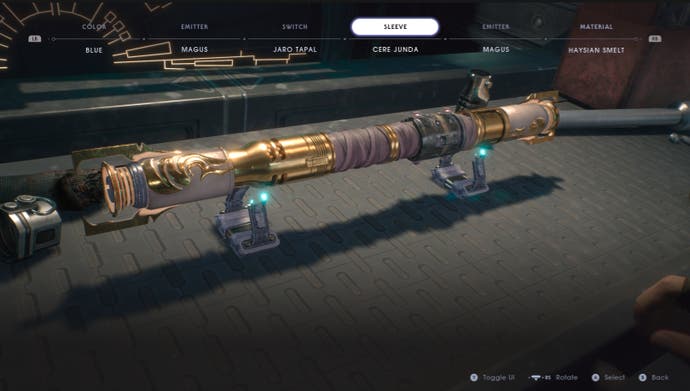
Yet the fun doesn't last: thus begins Fallen Order's turn to the dark side.
One of Fallen Order's big selling points is its Metroidvania influence - namely, the use of myriad unfolding paths that unlock as you acquire new abilities, with a level map to help players navigate (green means the route is unlocked, red is a no-no). It's simultaneously the game's biggest asset, and biggest flaw - a double-edged lightsaber, if you will. Once you've initially explored a brand new planet, retraversal to find bonus pick-ups and cosmetics is great: you're excited to explore the nooks and crannies, everything's fresh, and you're willing to spend that time because you're the person initiating the optional exploring. At that point, too, the maps are small enough that it doesn't take an age to hike them.
In the middle of the game, however, the story objectives ask you to revisit the same few planets - and this is when the Metroidvania elements become incredibly tedious. The objectives are normally placed beyond everything you've already explored, which is a long way to walk. While you can unlock shortcuts, these are often hard to spot in the all-blue, complicated level maps, and are no longer marked in the bright yellow colour that indicates an unexplored area. In any case, most shortcuts aren't significant enough to make a big dent in travel time. With the buzz of exploring a new world now gone, you have a lot less patience to go back through complicated winding tunnels. Then, once you've completed your objective, the worst part of all: you have to trek back to the ship, a process which can take over 20 minutes of hacking your way through enemies you've already defeated. Even Dark Souls eventually gets a fast travel option about 2/3rds of the way through, and Fallen Order is crying out for something similar.
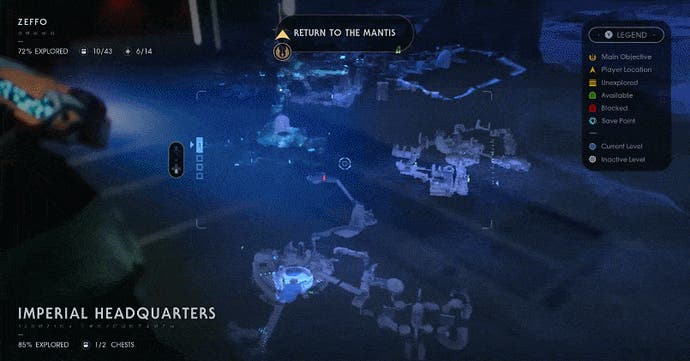
The one thing that could have inspired me to keep grinding through all this would have been the promise of gripping story developments. But alas, there's very little there. In the process of writing this review I had to return to the game's chapter notes, as most of the story developments had turned to soup in my head. You're constantly being ferried between the ship and the objective, chasing the holotapes of a dead Jedi to collect stuff, in order to collect more stuff. It's a never-ending breadcrumb trail with no emotional payoff.
At the heart of the narrative problems lies one key issue: I simply don't care about any of the characters. Cal has the personality of a wet poncho. Many of his conversations result in him essentially saying little more than yes/no, or remarking on the mission objective. The best it gets is the odd joke with BD-1, and although Cere has a more interesting backstory, neither she nor Cal are particularly dynamic - and their conversations, which make up the bulk of the dialogue in Fallen Order, are just dull. I found myself totally alienated from his character, and instead wishing I could be hanging out on the other side of the laser gate with the Second and Ninth Sisters, who actually have a hint of personality and deliciously evil dialogue. Of course, there's no option to make dark side decisions in this game (Cal never even contemplates it) and unfortunately you only see the villains when they pop up in boss battles. Pity.
More than anything, aside from the way in which some of the story moments are visually presented, there's nothing clever about the story. Themes of failure and dealing with guilt and trauma are thrown around, but never explored in any depth. The game just doesn't allow time for it. The other characters remain on the ship, so you're normally stuck with Cal's bland exchanges with his droid - while the cutscenes are all business, all about the next objective. Thank god for Greez, who is the only one with consistently humorous and engaging dialogue - but one character cannot carry a story. When Greez tells Cal his actions have changed his outlook on life, it's incredibly jarring, as none of the necessary groundwork has been laid before that point. It's just not believable.
Ultimately, Fallen Order has a story that barely develops. It's a story without clear direction. It's a story without risk.
It all makes Fallen Order a slog. I was tired of wading through waves of enemies, only to find no interesting story at the end, and unable to skip through levels quickly: even running past in story mode ends up with you getting whacked, shot off ropes, or stuck at doors with an enemy mob in hot pursuit.
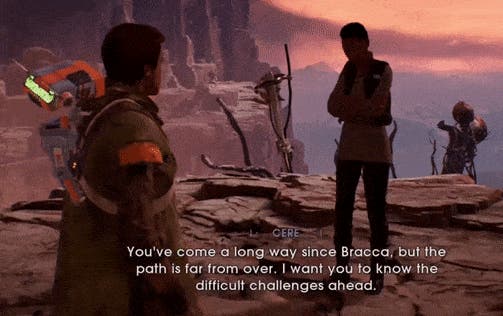
Maybe the Soulsborne format just isn't the best fit for Star Wars. In order to provide challenge, enemies have to be struck several times - and this has the effect of making lightsabers feel underpowered. Perhaps it makes sense when Cal is at the beginning of his journey, but even when Cal is at his most powerful, it takes about three slashes to down an overgrown rat. Lightsaber fights also feel less epic with Cal flopping on the floor while you're trying to figure out an enemy's attack pattern. You do get more abilities and skills, and you can increase your HP and force, but Fallen Order never lets you take the gloves off. The reason behind limiting your force meter is to make players engage with the fast-parrying melee combat, as you restore the meter through killing enemies (or hitting blocked ones, if you unlock that perk). The retraversal issue would have been significantly lessened if you could simply rampage through enemies when returning to a planet. What fun it would have been to let loose with Cal's force powers, and a hard-hitting lightsaber.
When I reached the end of Star Wars Jedi: Fallen Order, I didn't feel like I'd had a rewarding experience. I was relieved it was over. With some side-meandering, it took around 30 hours, and I didn't enjoy a lot of them. I'll admit crunching a Souls-like in less than four days is an unnatural and gruelling experience: I imagine if I'd played Fallen Order over several months, I would have been less frustrated, but probably still bored. It's such a shame, as Fallen Order has an incredible gameplay experience at its core, with fantastic environments and well-directed action sequences. Yet it's unable to sustain this thanks to some fundamental design problems.
As for the story? Well, it never gets off the ground.
